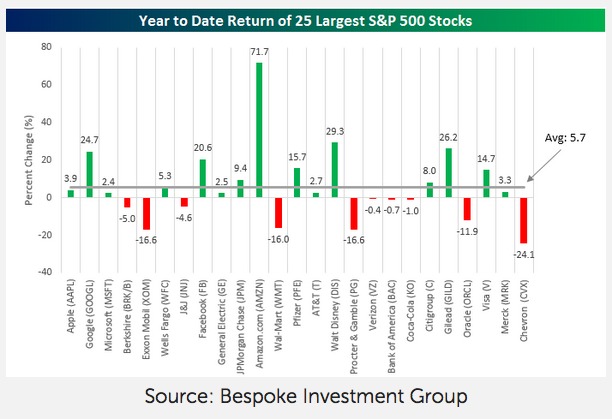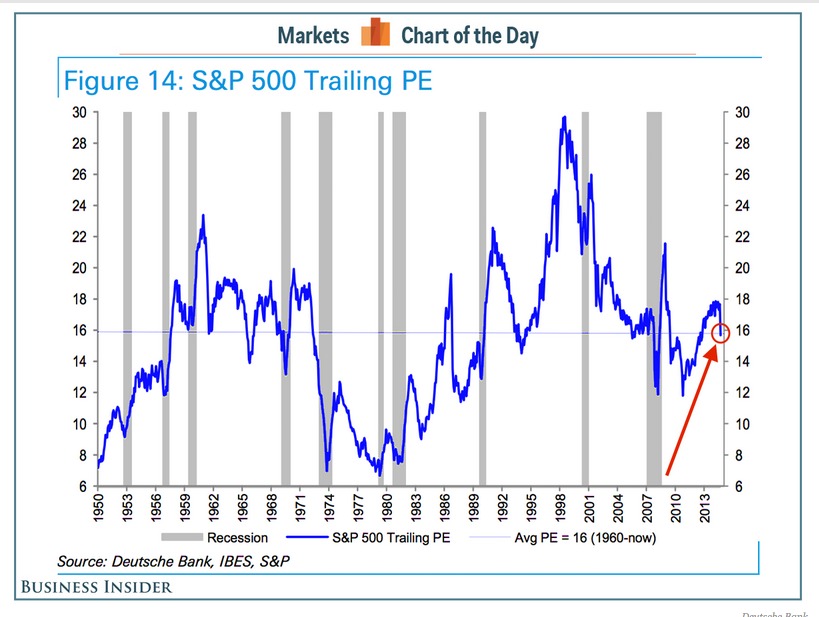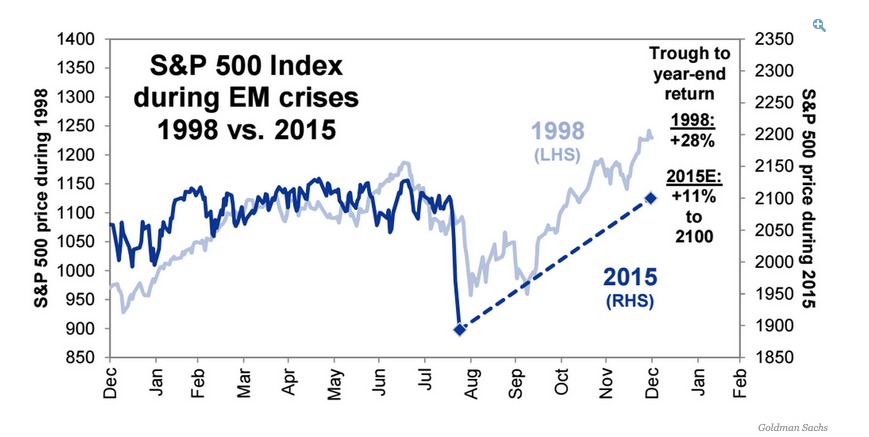The US stock market experienced its first 10%-plus correction since 2011 last week and volatility readings remain elevated.
Market experts seem pretty evenly divided on the outlook for the rest of the year.
Here’s a breakdown of the major arguments separating the optimists from the doomsayers.

Bearish Take
Doug Ramsey, chief investment officer at Leuthold Group, which manages $1.6 billion in Minneapolis, sees the market heading into a “garden-variety” bear territory, traditionally defined as a 20%-plus decline from a recent peak.
The US Federal Reserve stopped pumping liquidity into the stock market when it ceased buying bonds last fall as part of its quantitative easing program.
On top of that, the Fed at some point (September or beyond) will start raising interest rates.
The dollar’s strength, meanwhile, against major foreign currencies has hit the earnings of big US multinationals.
Add it all up, and there’s nothing supporting a continued upward movement in stocks.
Market Breadth
Another worrisome sign is the decline in market breadth–or the number of stocks supporting the bull market rally.
Bespoke Investment Group recently looked at the outsized role being played by the S&P 500’s biggest 25 stocks by market capitalization.
These 25 large caps are up an average of 5.7%, outpacing the average 1.7% return of the other 475 companies that comprise the overall index.

That’s not a sign of a robust market.
The Bulls Case
On the flip side, the sell-off has brought the valuations of US stocks back down to earth.
Deutsche Bank’s David Bianco notes S&P 500’s price-to-earnings ratio based on trailing 12-month earnings is back to its long-run average.
The P/E based on forward earnings over the next 12 months is now only a tad bit about historical averages.

Historical Parallel
The US stock rout stemmed in part from troubles in China, which has just devalued its currency and destabilized regional currencies and markets in Asia.
Goldman Sachs analyst David Kostin points out that US stocks experienced a correction in the summer of 1998 as Asia slowed down.
But then the US stock market stormed ahead as investors realized the American economy wasn’t all that vulnerable.
Kostin thinks that is how things will play out this time.
Or has he puts it:
“We expect the US economy will avoid contagion and continue to expand. S&P 500 will rise by 11% to reach 2100 at year-end.”

Global Share
One promising sign: US stocks remained remarkably popular among global investors.
Even as the S&P tumbled last week, the global market share of US stocks rose.
That could be viewed as a positive.

Takeaway
Fasten your seat belts. The US stock market is likely to be choppy in the next several months.
Best to make sure your portfolio is well-diversified for the uncertain times ahead.
It’s too soon to know whether the bears or bulls have the right read on this market.
Photo Credit: Lake Clark National Park via Flickr Creative Commons



